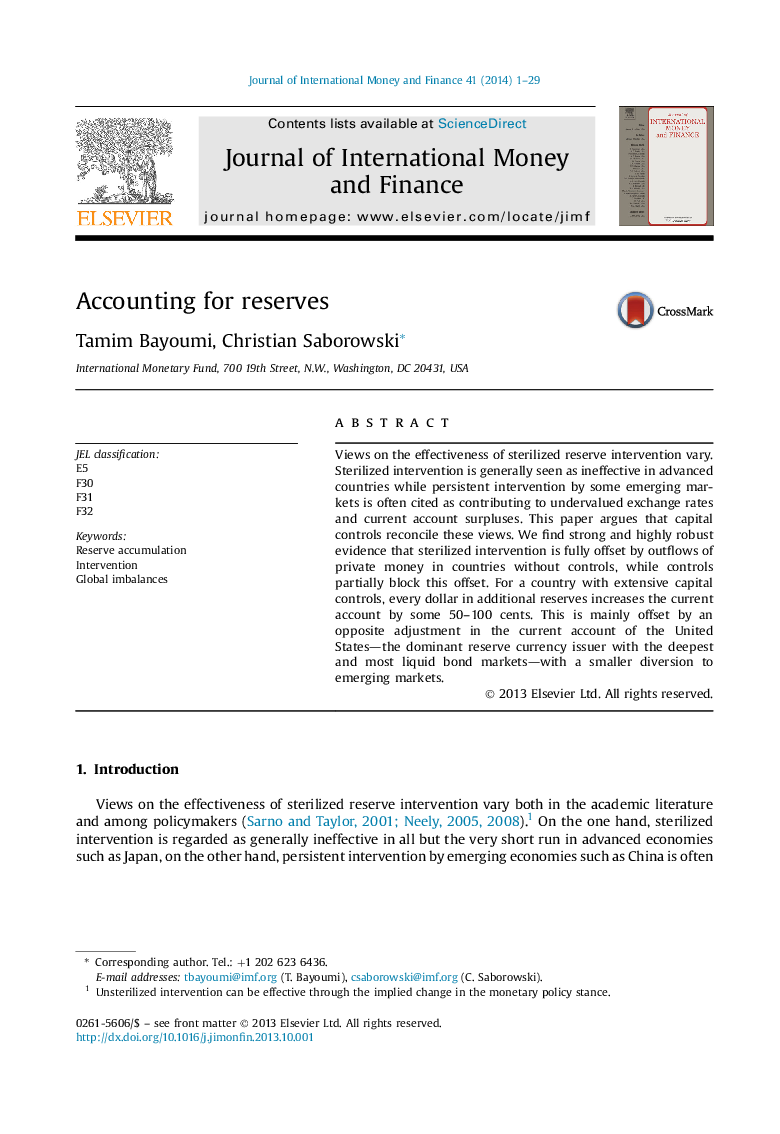| کد مقاله | کد نشریه | سال انتشار | مقاله انگلیسی | نسخه تمام متن |
|---|---|---|---|---|
| 963999 | 1479175 | 2014 | 29 صفحه PDF | دانلود رایگان |
• We argue that capital controls condition the effectiveness of intervention.
• Intervention is fully offset by private flows in countries without controls.
• With controls, intervention boosts the current account.
• The corresponding capital outflows end up mainly in the United States.
Views on the effectiveness of sterilized reserve intervention vary. Sterilized intervention is generally seen as ineffective in advanced countries while persistent intervention by some emerging markets is often cited as contributing to undervalued exchange rates and current account surpluses. This paper argues that capital controls reconcile these views. We find strong and highly robust evidence that sterilized intervention is fully offset by outflows of private money in countries without controls, while controls partially block this offset. For a country with extensive capital controls, every dollar in additional reserves increases the current account by some 50–100 cents. This is mainly offset by an opposite adjustment in the current account of the United States—the dominant reserve currency issuer with the deepest and most liquid bond markets—with a smaller diversion to emerging markets.
Journal: Journal of International Money and Finance - Volume 41, March 2014, Pages 1–29
